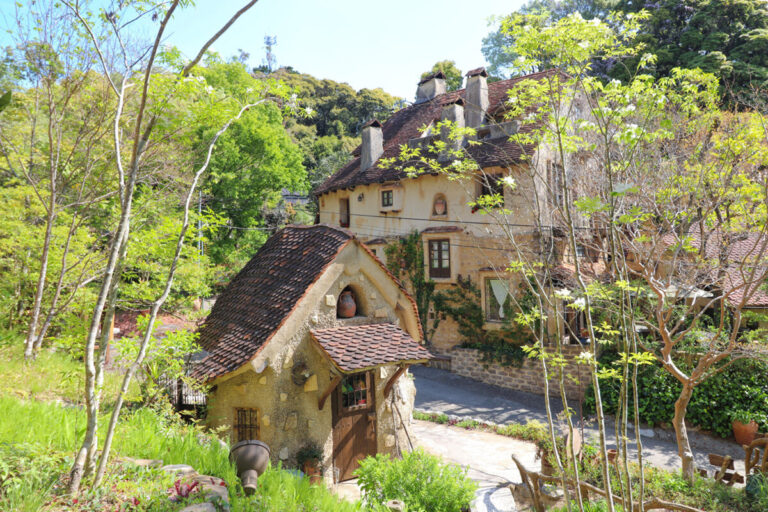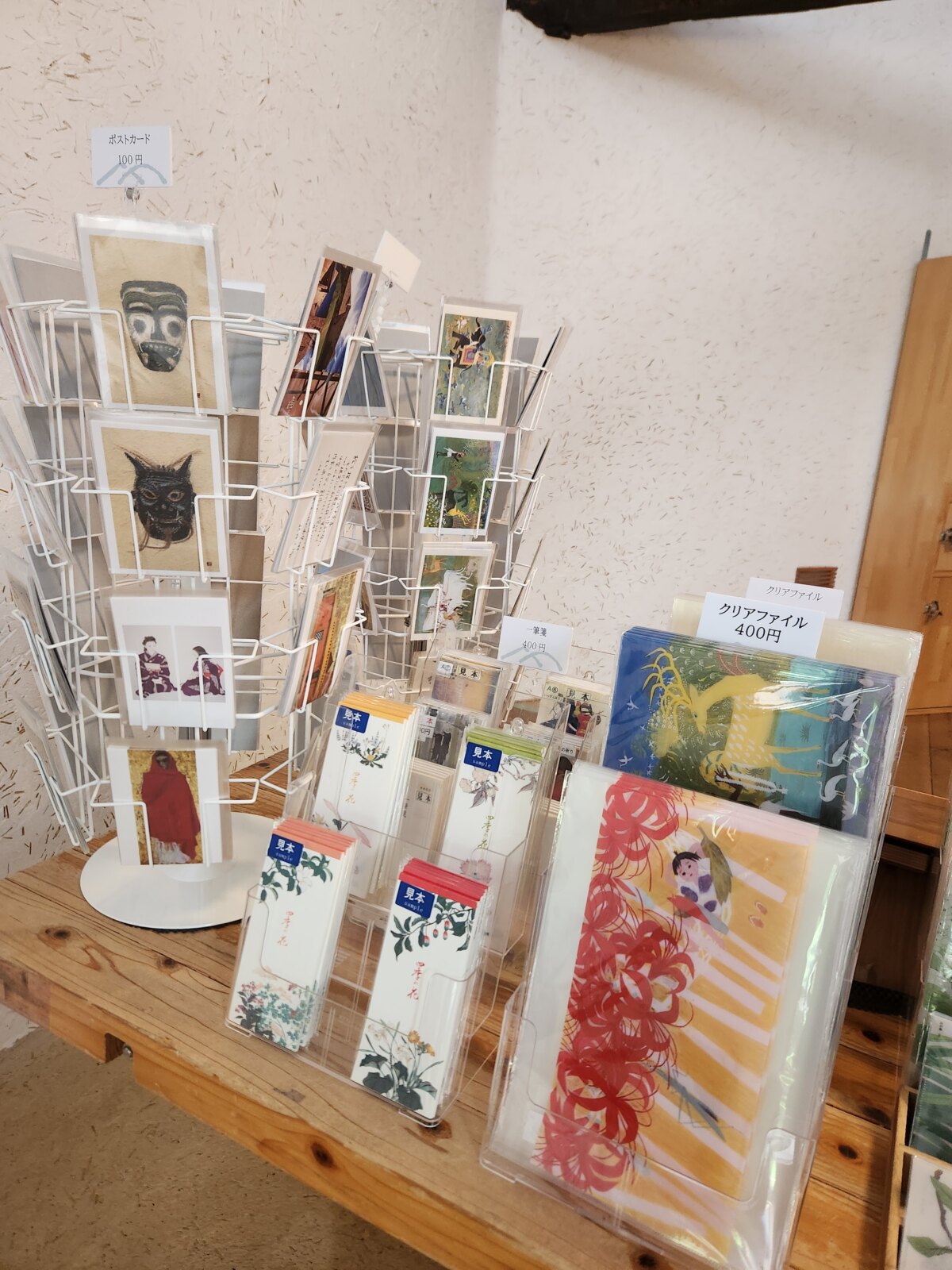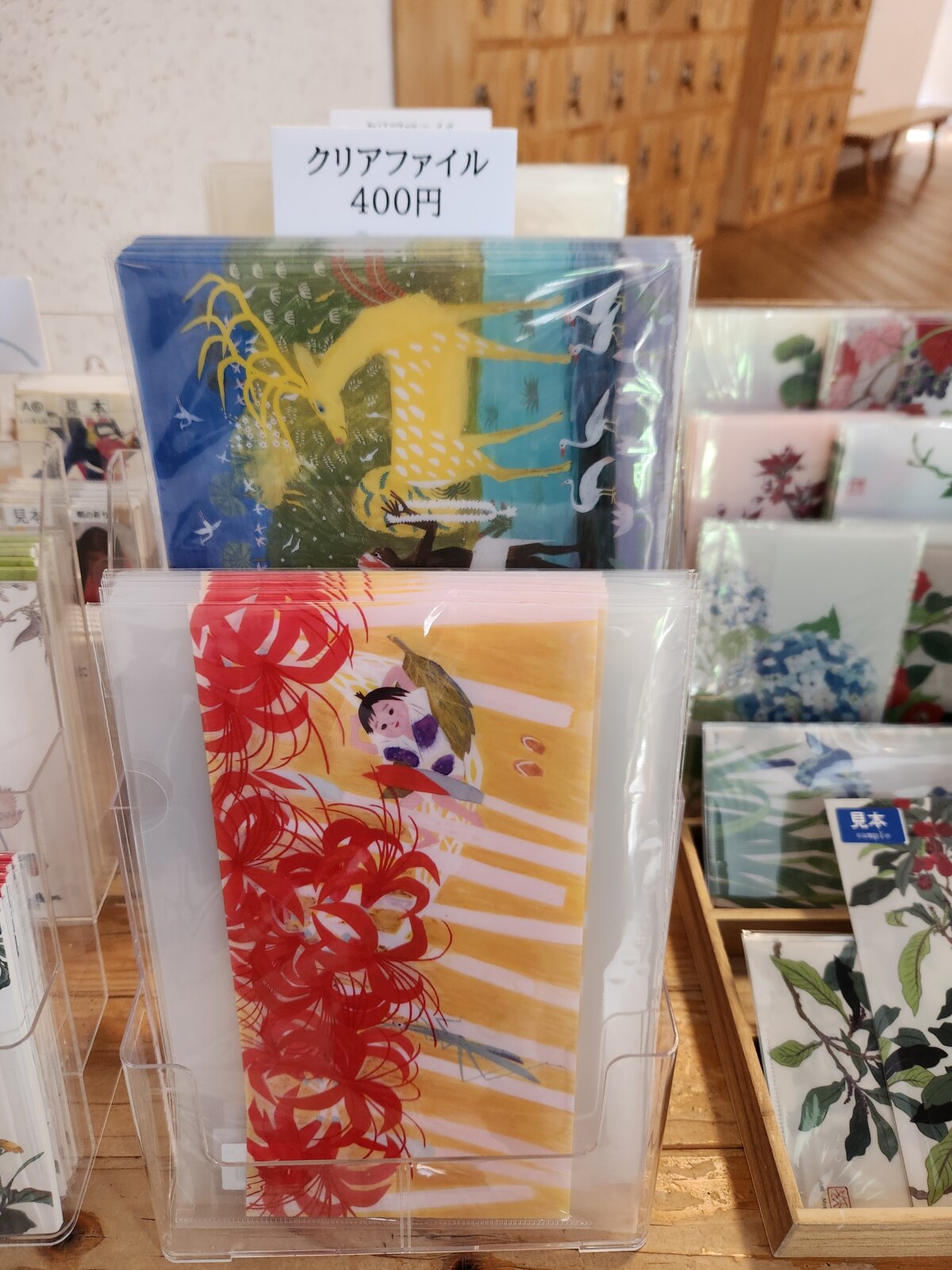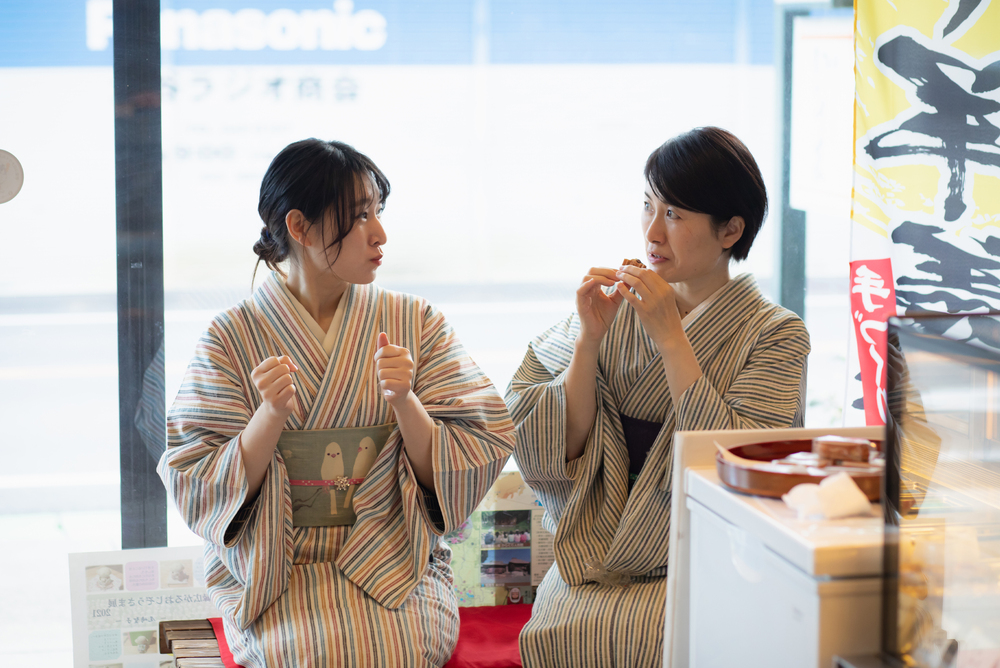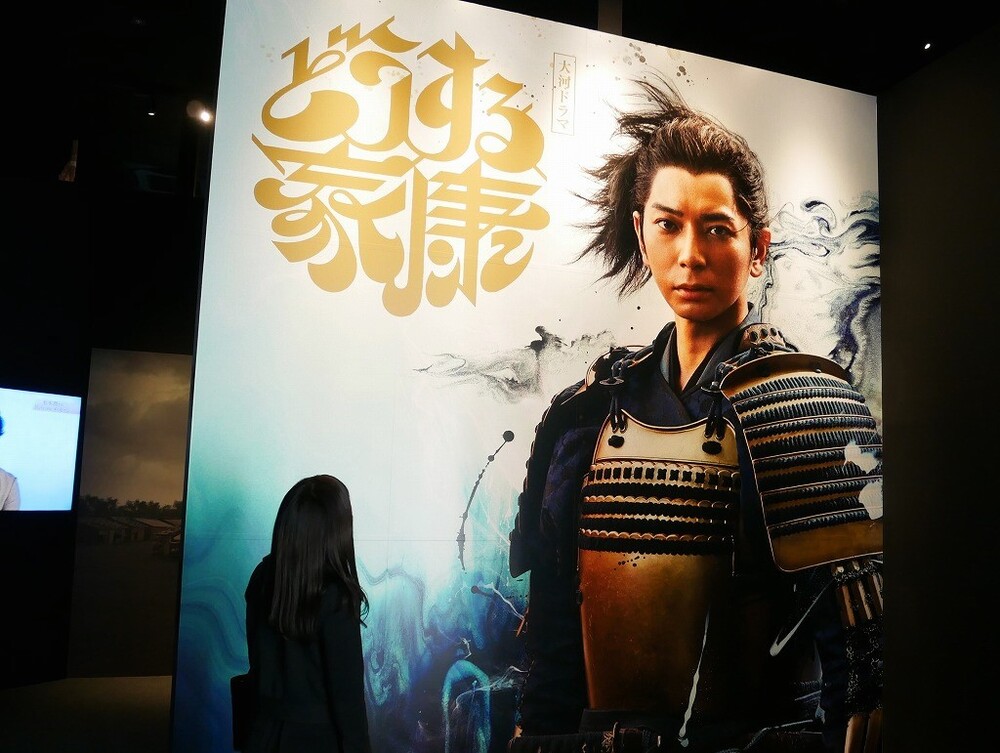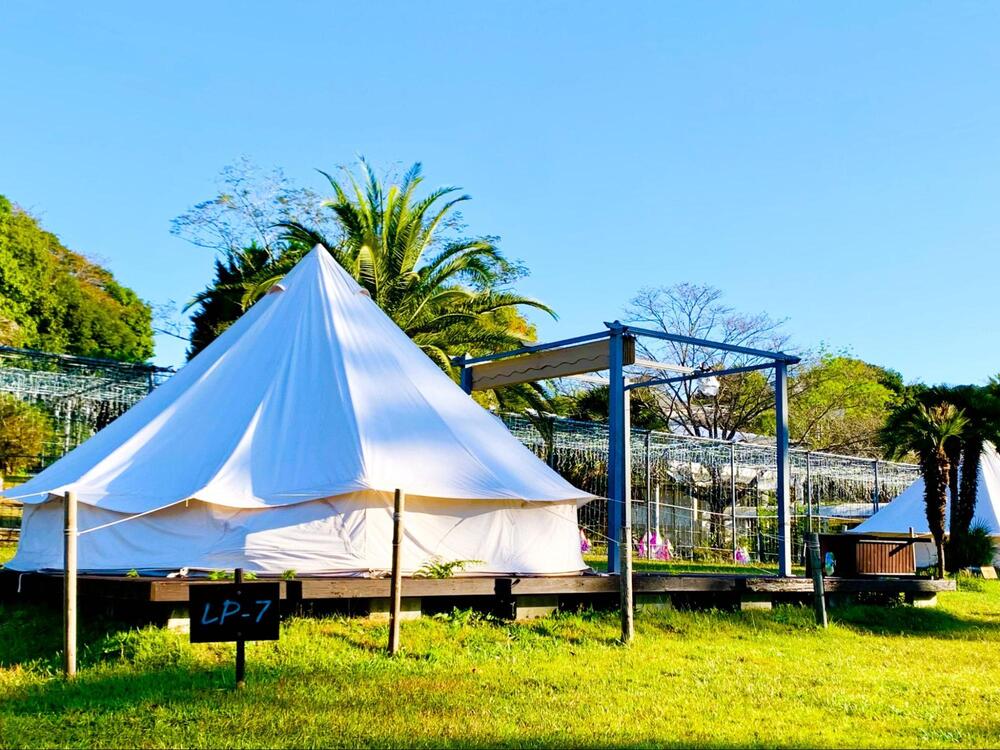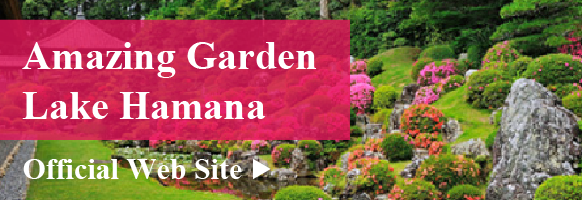Get to Know Hamamatsu
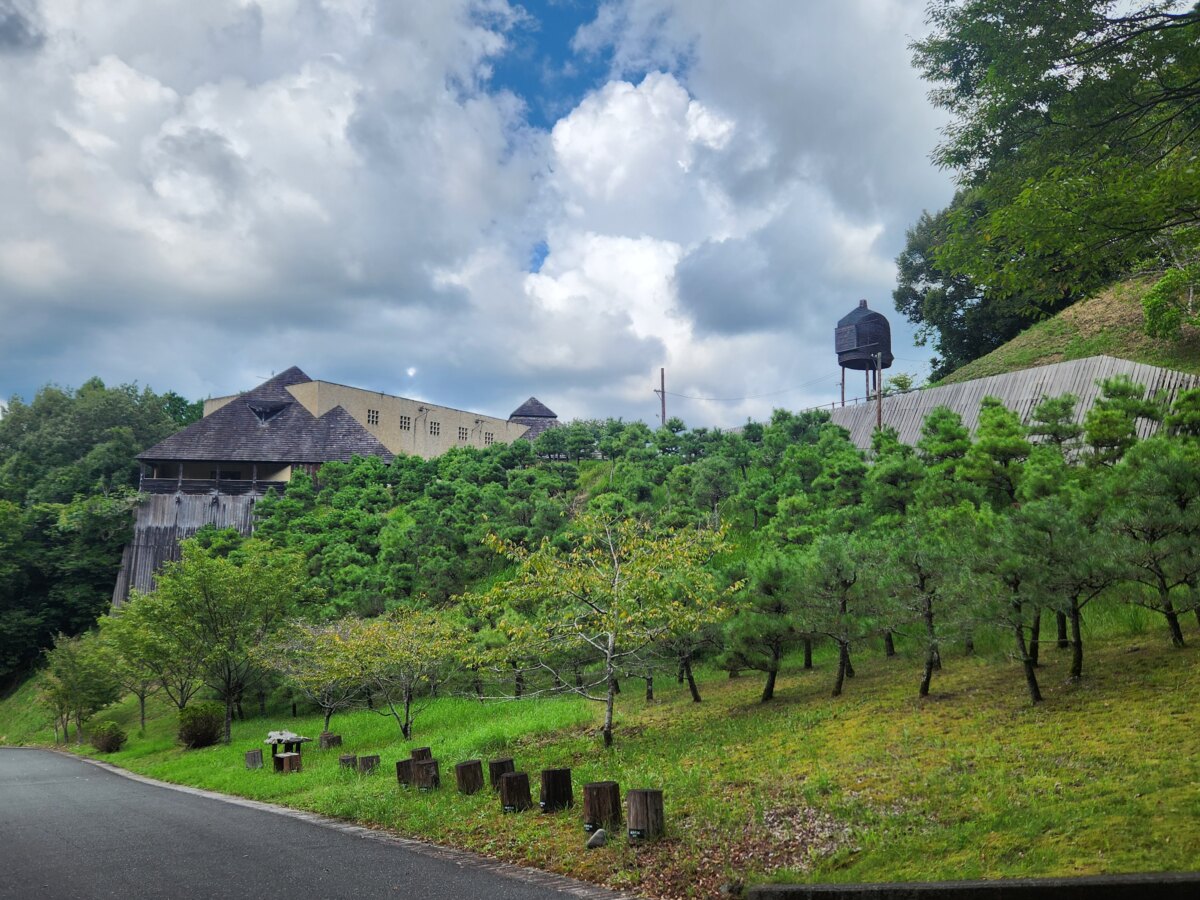
- Watch
Hamamatsu City Akino Fuku Museum of Art – A Storybook-Like Museum in the Forest
The Hamamatsu City Akino Fuku Museum of Art is not only loved by art enthusiasts but also attracts many architects, making it a popular spot known for its warmth and relaxing atmosphere…
This time, we visited the Hamamatsu City Akino Fuku Museum of Art, located in Tenryu Ward, Hamamatsu.
From the parking lot, a gentle slope leads you to a building with a unique, fairytale-like charm.
The Hamamatsu City Akino Fuku Museum of Art is not only loved by art enthusiasts but also attracts many architects, making it a popular spot known for its warmth and relaxing atmosphere.
We’ll take a closer look at the features and highlights of the Hamamatsu City Akino Fuku Museum of Art in Tenryu Ward, Hamamatsu♪
What Kind of Place is the Hamamatsu City Akino Fuku Museum of Art?
This is the museum that opened in 1998 in the hometown of Akino Fuku, who was born in Futamata-cho, Tenryu Ward, Hamamatsu.
The museum was built to preserve the achievements of Akino Fuku, a Japanese painter awarded the Order of Culture, and to promote cultural development in the local community.
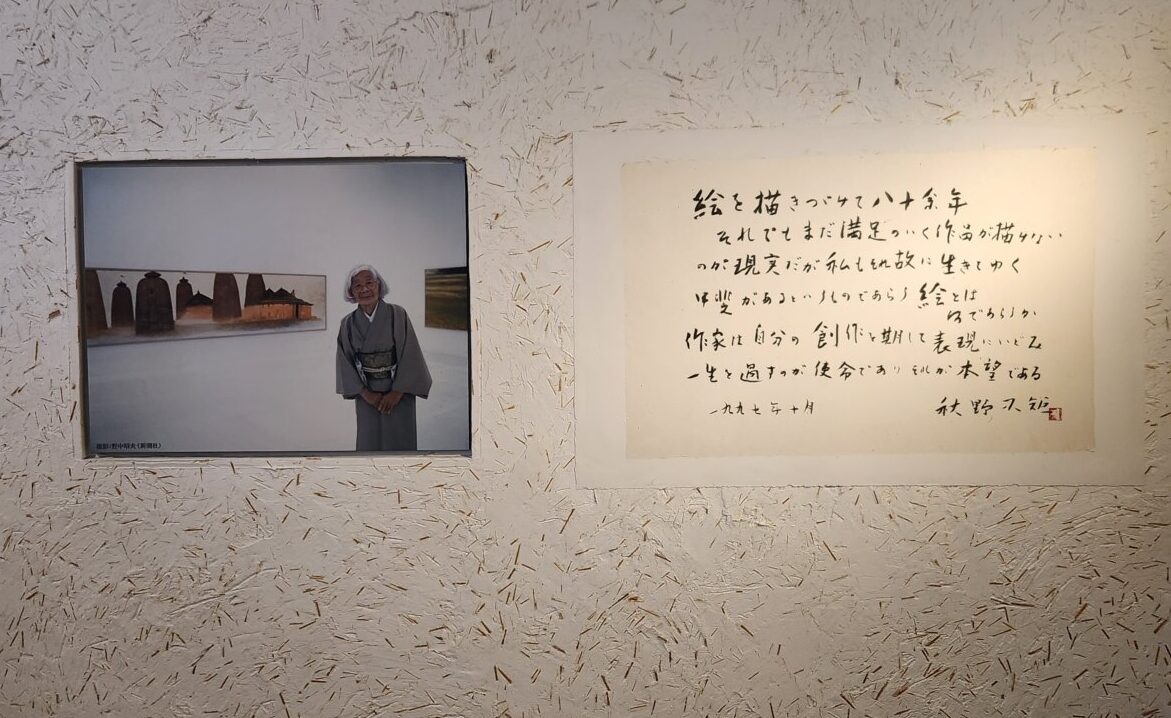
“It is very rare for a public museum to be built and named after an artist while they are still alive,” says Mr. Eiji Suzuki, the museum director.
When planning the museum, Akino Fuku visited various buildings and thought that the Jinchokan Moriya Museum in Chino City, Nagano Prefecture, might align with her own vision. She then commissioned Mr. Terunobu Fujimori to design the museum.
A museum with a unique, one-of-a-kind atmosphere was born.
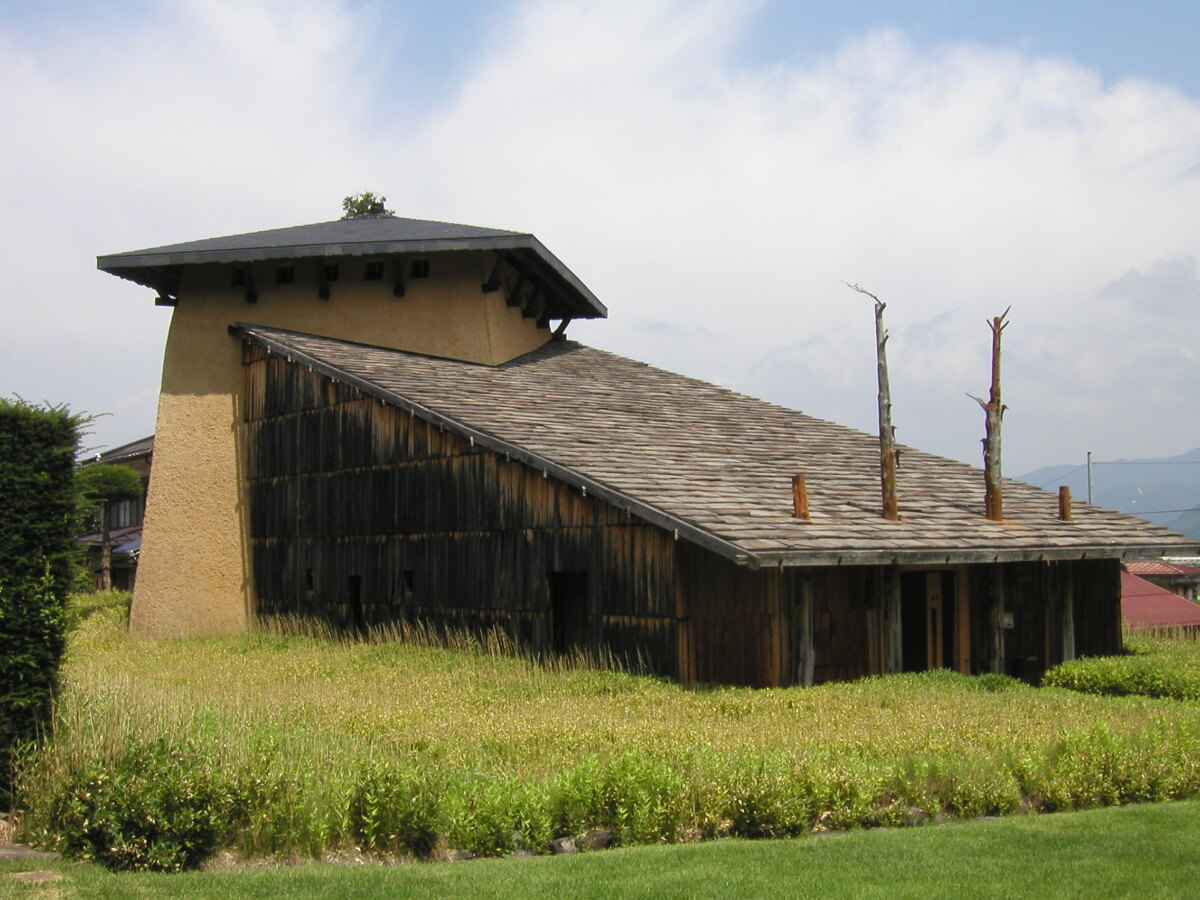
Image source: Hamamatsu City Akino Fuku Museum of Art official website (Jinchokan Moriya Museum)
The building makes extensive use of natural materials, such as local Tenryu cedar and plaster walls, giving both the exterior and interior a warm, inviting atmosphere.
The large Tenryu cedar pillar at the reception desk was crafted with a unique texture by Akino Fuku’s son using a chainsaw, making it a striking feature of the museum.
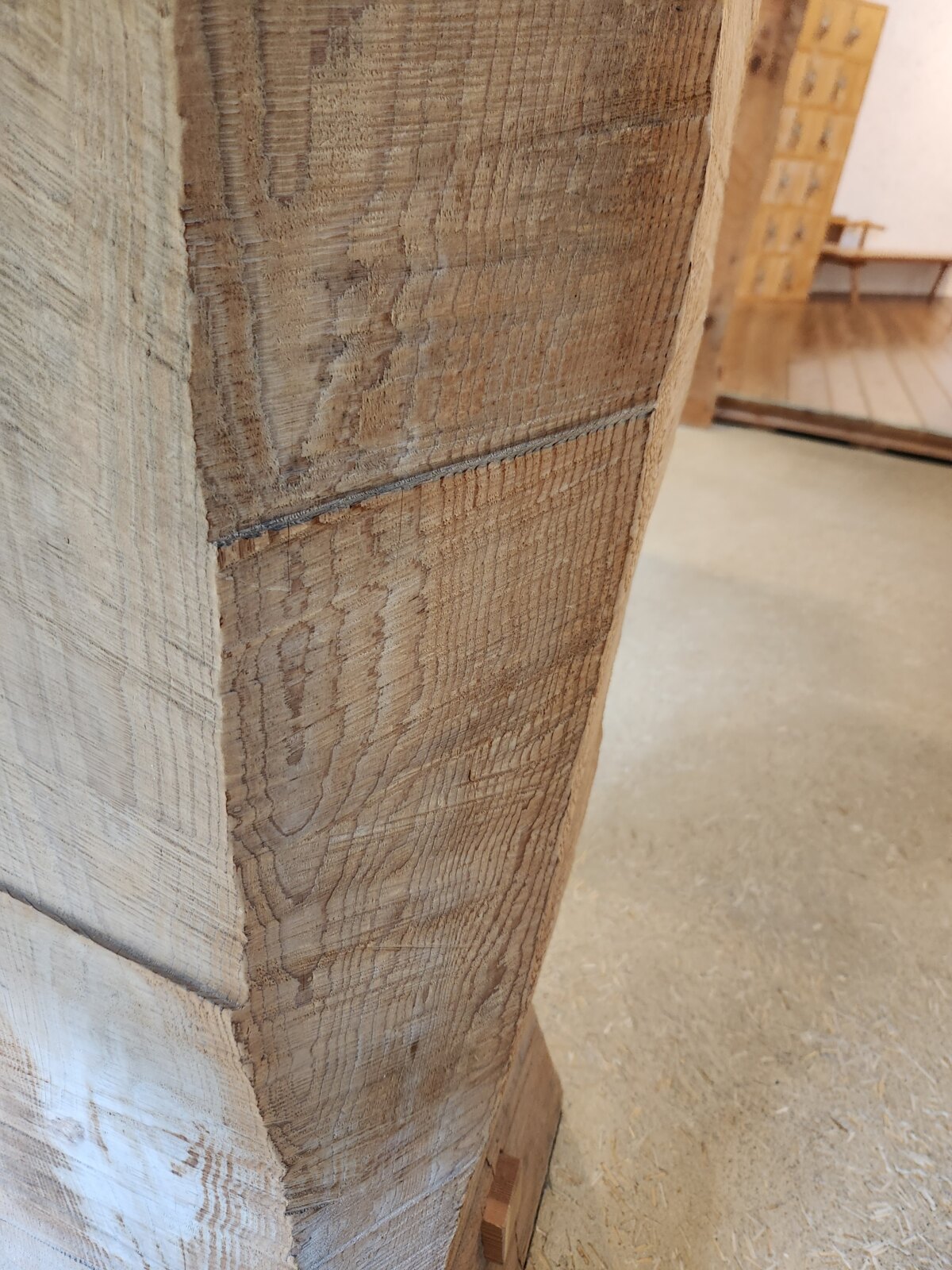
The exposed ceiling beams evoke the same tone as the black used in Akino Fuku’s artworks, creating a sense of harmony with the building.
From the windows on the second floor of the museum, visitors can observe the details of these beams.
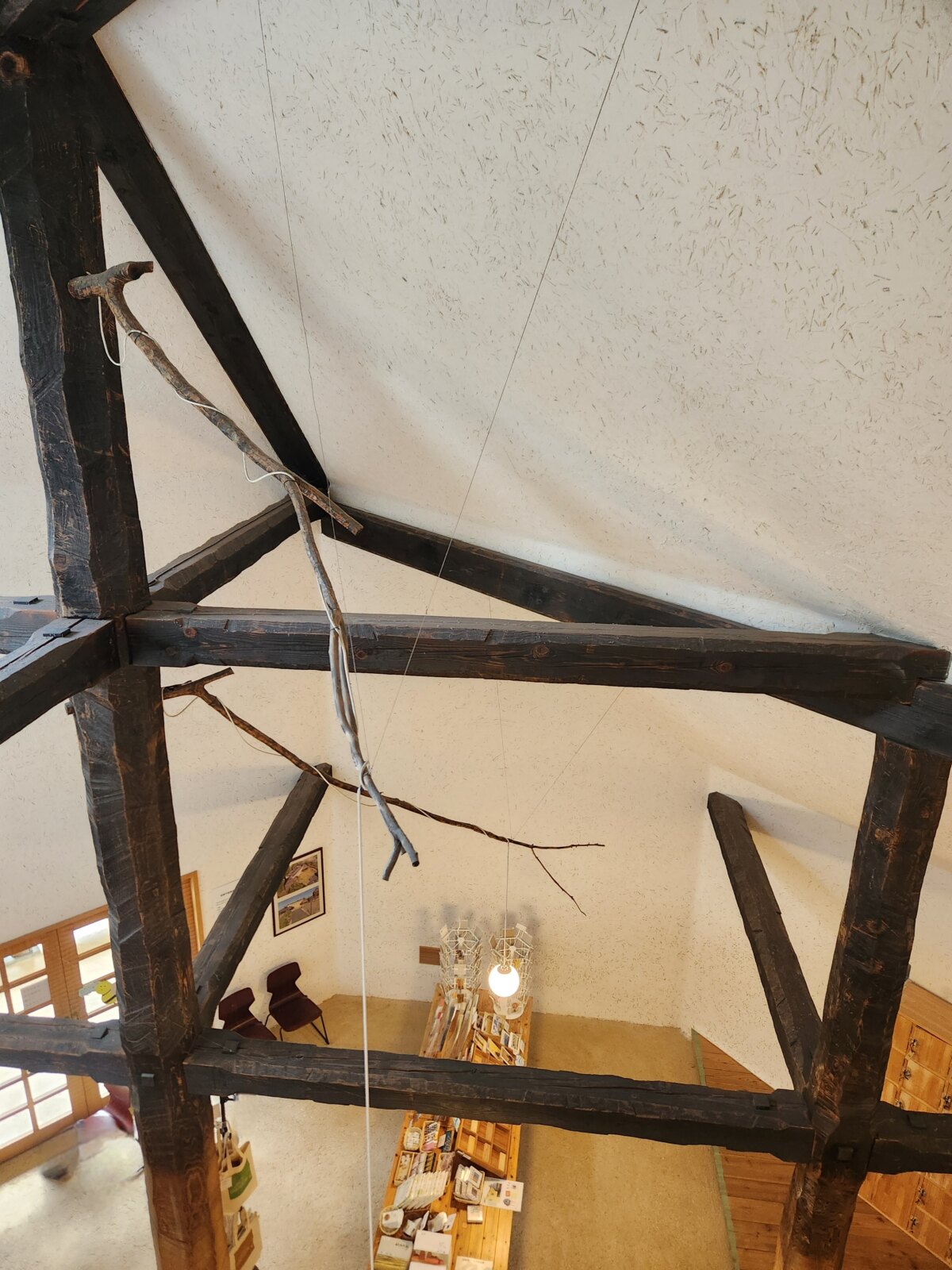
The doors and window frames feature a unique texture created with a curved plane, resulting in a one-of-a-kind design that makes you want to reach out and feel it for yourself.
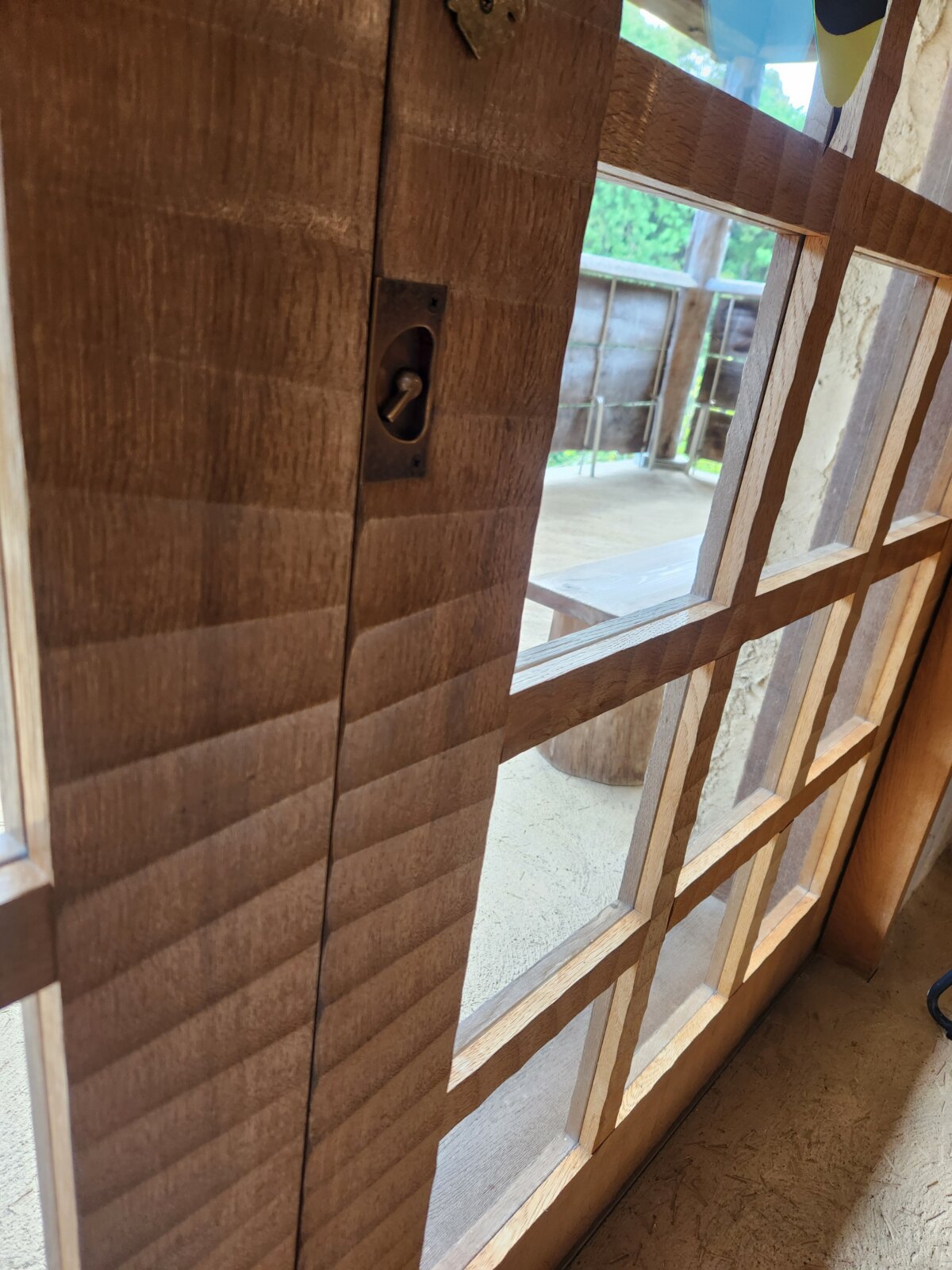
The meticulous craftsmanship in every detail attracts not only art lovers but also many architects.
With carefully selected materials used for the roof and walls, visitors can enjoy the building itself as much as the artworks inside.
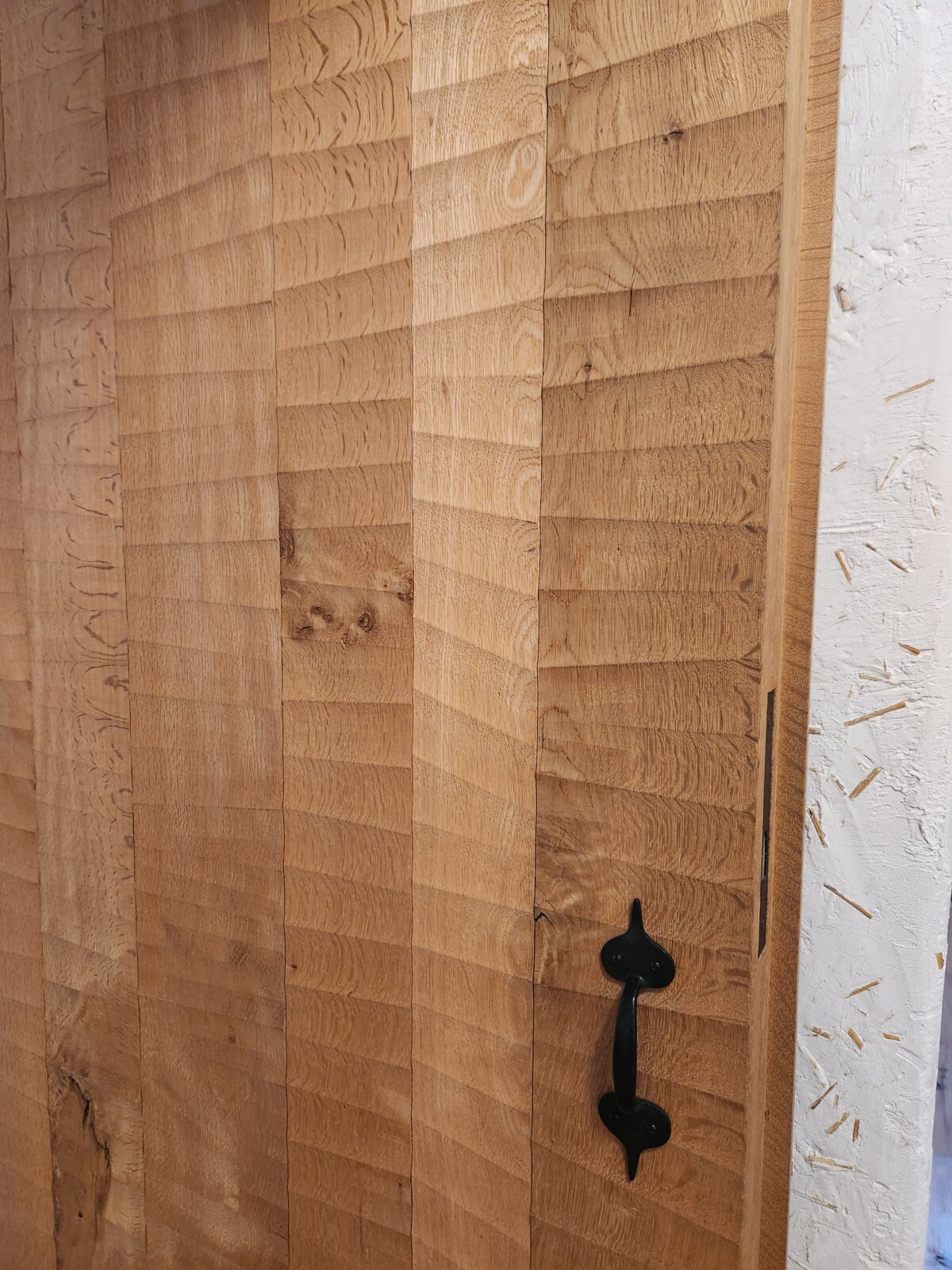
To celebrate the 20th anniversary of the Akino Fuku Museum, an outdoor tea room designed by Terunobu Fujimori was built in 2018.
The roof and exterior walls are made of copper panels, and local children from Tenryu participated in shaping them by hand under Fujimori’s guidance.
It is said that the project carries the hope of fostering a greater love for their hometown among the children.
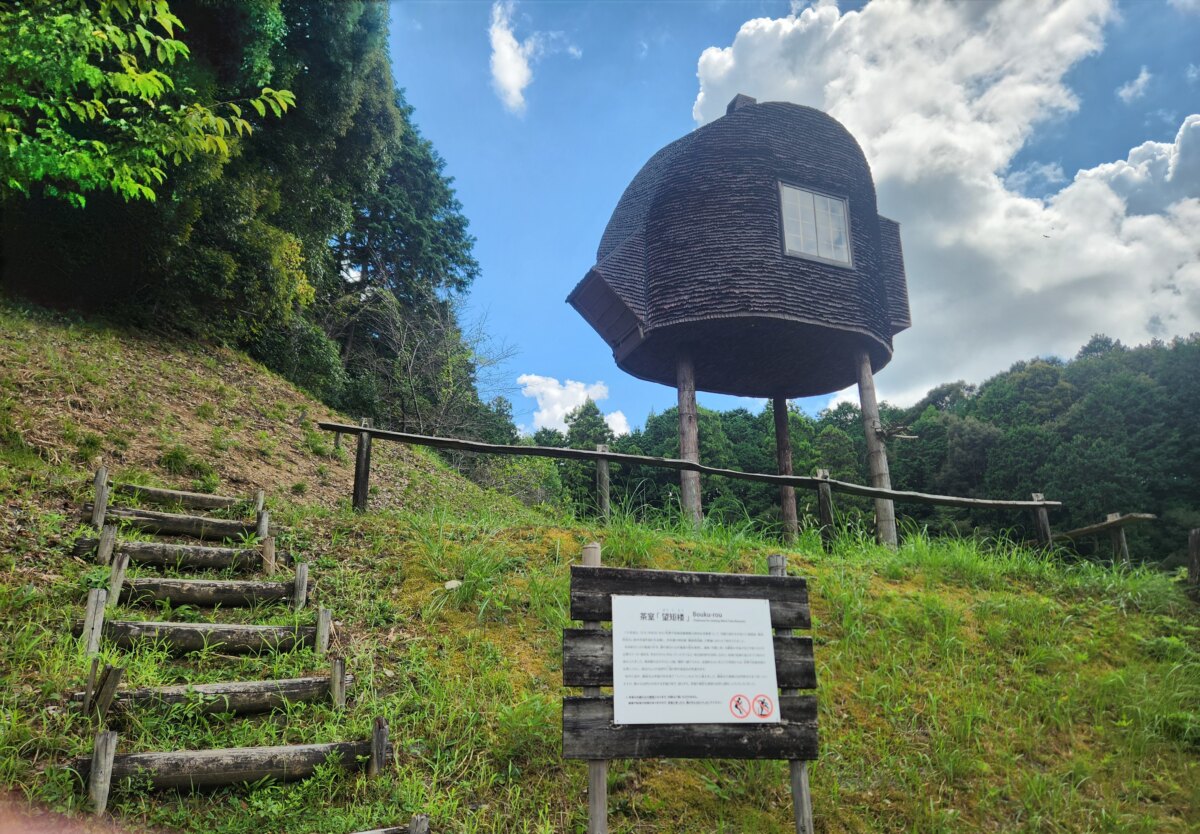
The tea room Bōkurō, completed on the museum grounds, is made from local Tenryu wood.
Its distinctive exterior, combined with the museum, creates a unique and harmonious atmosphere.
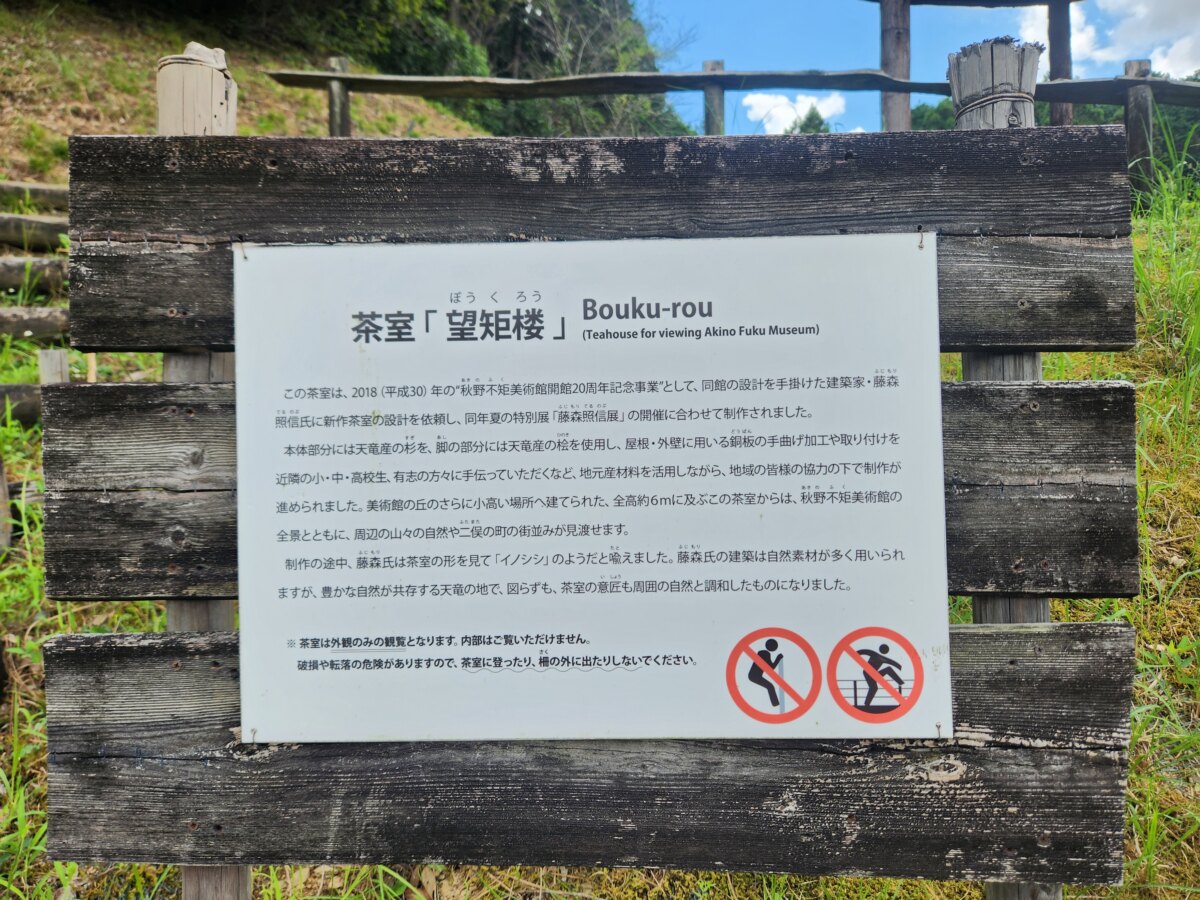
The Hamamatsu City Akino Fuku Museum of Art houses approximately 330 works centered on Akino Fuku.
In addition to the collection showcasing her works, the museum also holds several special exhibitions each year.
Highlights Guide of the Hamamatsu City Akino Fuku Museum of Art
What sets the Akino Fuku Museum apart from other museums is its custom of removing shoes while viewing the artworks.
Both the first and second exhibition rooms are designed with completely different concepts, allowing visitors to enjoy the natural warmth under their feet as they view the artworks.
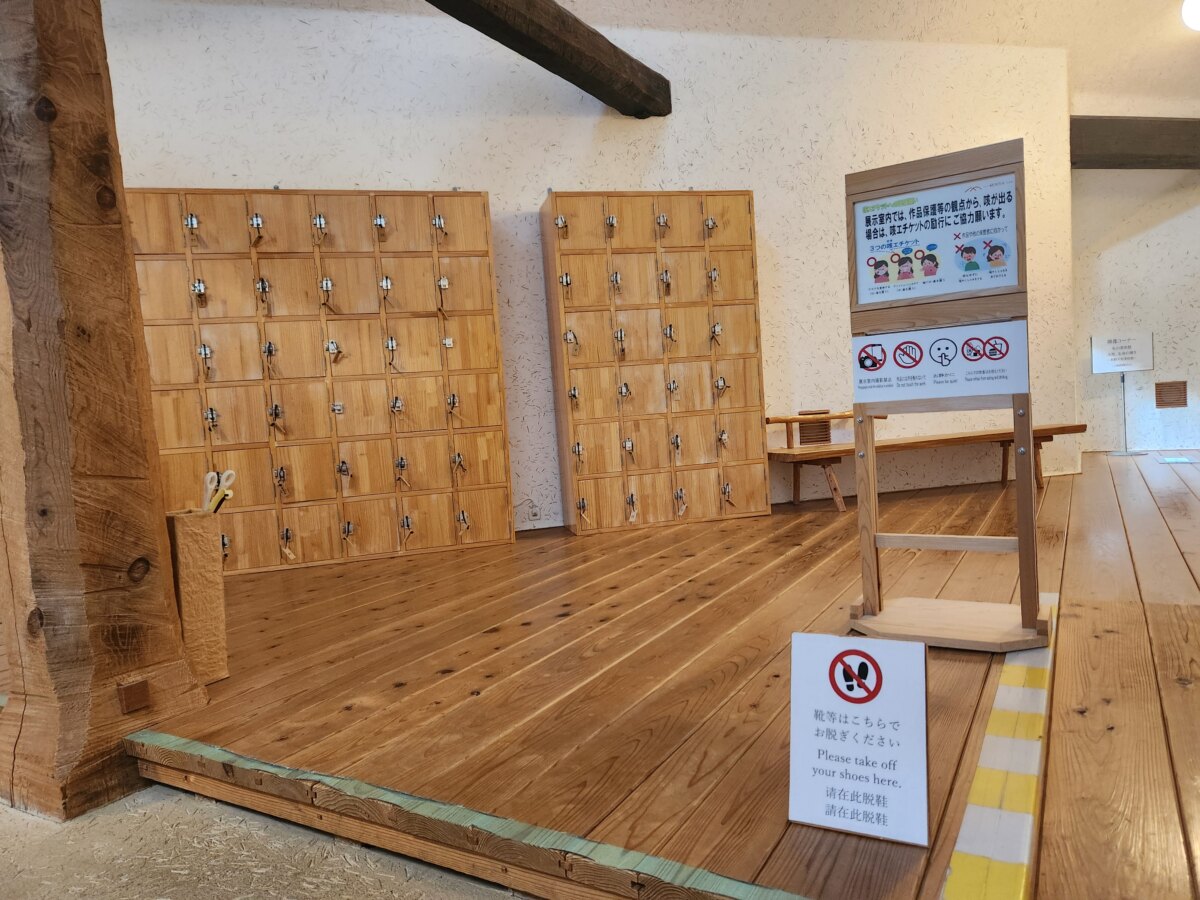
Near the entrance, there is a video corner where visitors can learn about the life and history of Akino Fuku.
The video lasts about five minutes, so watching it before exploring the collection is recommended—it’s a great way to get to know Akino Fuku’s personality.
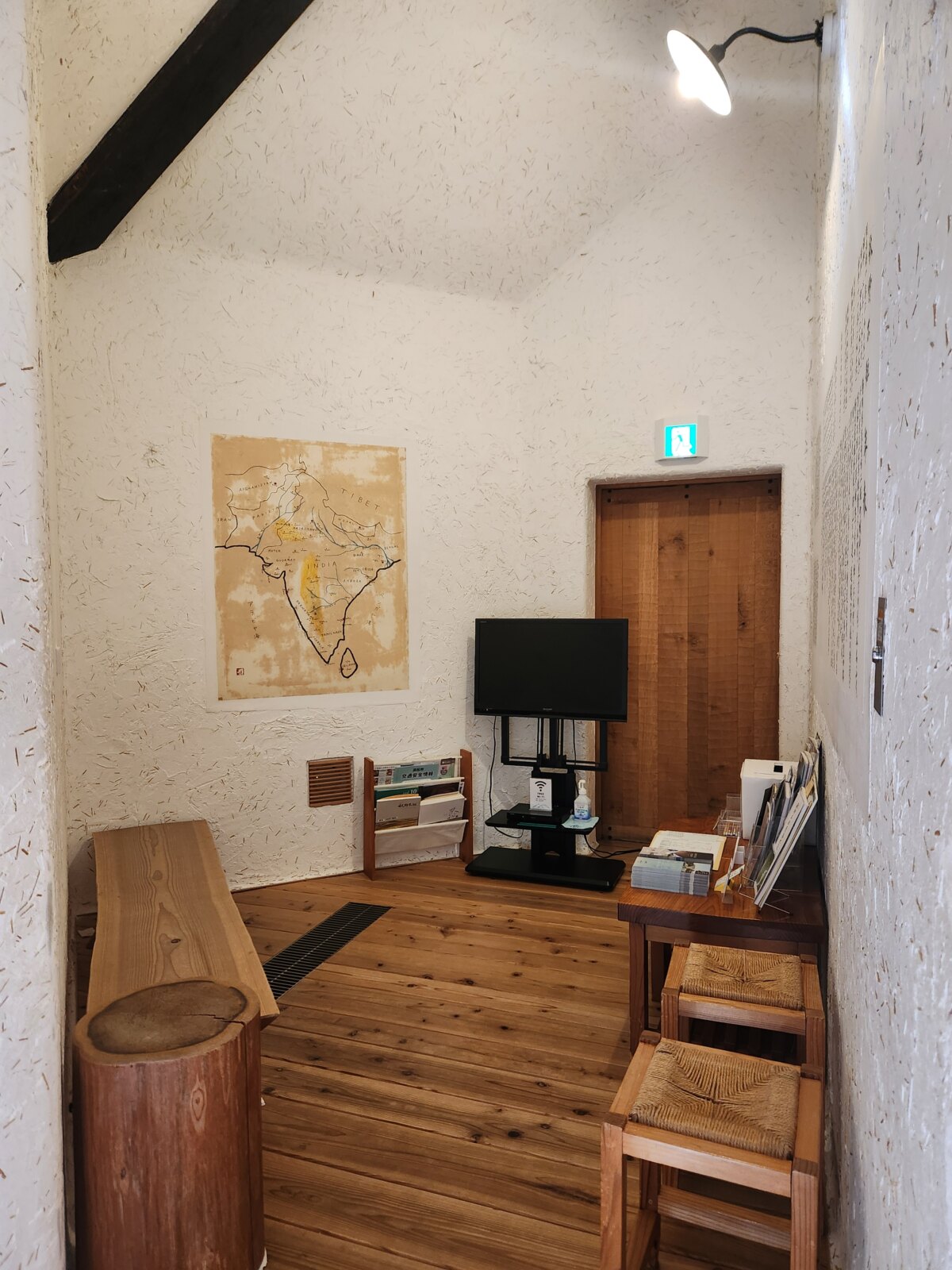
Since this is a museum where visitors remove their shoes, some like to sit and take their time viewing the exhibitions, while others enjoy relaxing and taking in the outdoor scenery.
It seems that everyone enjoys the museum in their own way.
Highlight ①: First Exhibition Room

Photo credit: Hamamatsu City Akino Fuku Museum of Art
The first exhibition room is shaped like a long rectangular corridor, featuring white plaster walls and floors covered with rattan mats.
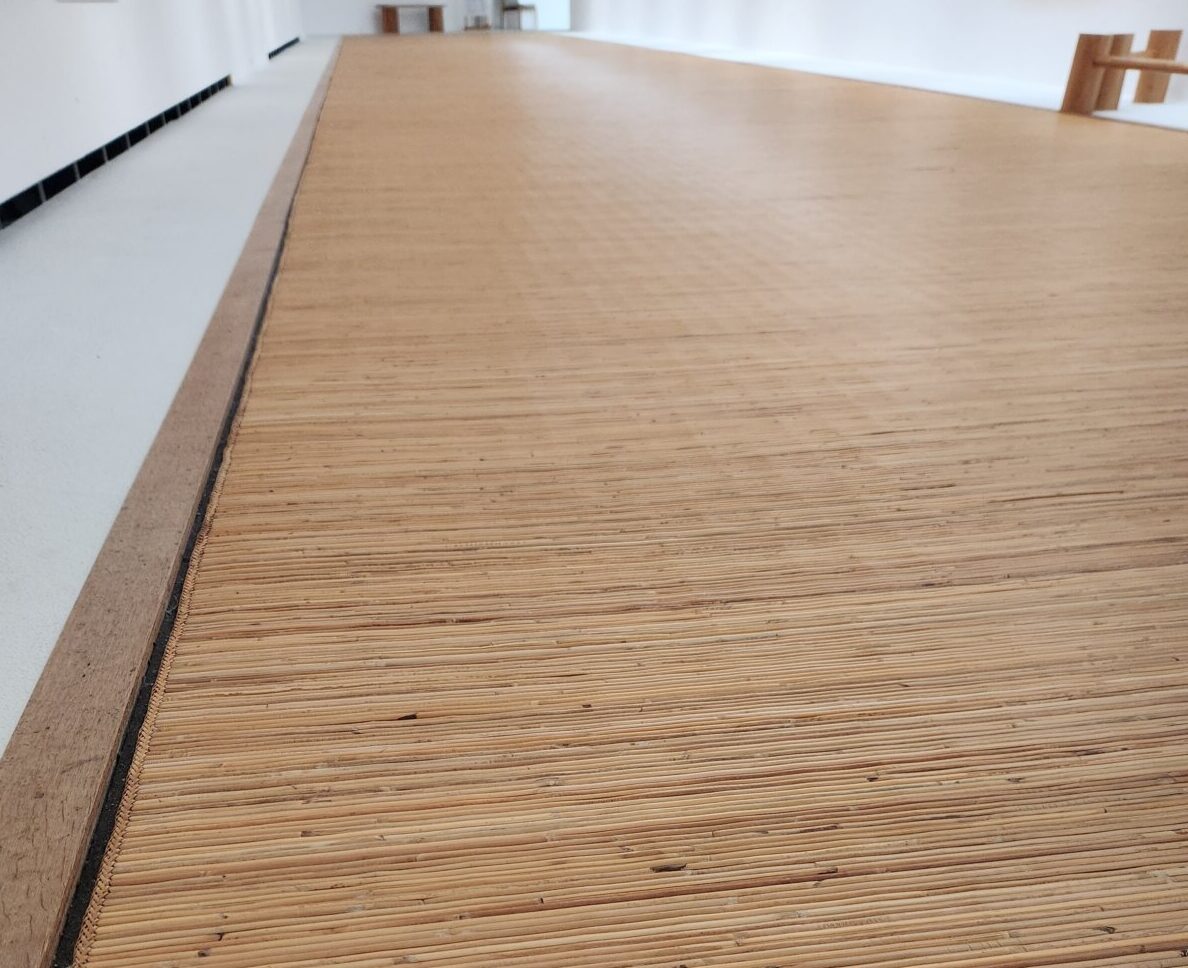
Since rattan mats were also used in Akino Fuku’s studio, the museum hopes visitors can enjoy the artworks while feeling the atmosphere of her workspace.
The sunlight filtering through the small windows adds to the charm, creating a truly delightful space.
It’s unique that visitors can sit comfortably on the rattan mats and enjoy the artworks at their own pace!
Highlight ②: Second Exhibition Room
As you move on from the first exhibition room, you’ll enter the second one—a bright, pure white space.
If you look closely at the corners of this square-shaped exhibition room, you’ll notice they are rounded rather than sharply angled, creating a soft, seamless finish.

This design is said to create a sense of depth in the space while giving it a gentle and soft impression.
The floor is entirely covered with 6-centimeter-thick marble from Macedonia, featuring a dreamy color that appears somewhere between white and pale pink.
In the center of the exhibition room, there is a spot often referred to as a “power spot,” where a semicircular structure is built into the floor.
Many visitors sit here to take their time appreciating the artworks.

When you look up from the center of the exhibition room, you’ll notice that windows are placed only on the north and west sides.
These windows are carefully designed to let in light that enhances the artworks on display.

Since the artworks are displayed at a low height, one of the charms of this museum is that visitors can sit back and appreciate them in their own relaxed style.
The second exhibition room is designed so that sounds gently resonate through the space. Because of this, it’s sometimes used not only for viewing paintings but also for intimate museum concerts featuring different instruments.
For information on events and other ways to enjoy this wonderful space, please visit the official website of the Hamamatsu City Akino Fuku Museum of Art.
Highlight ③: Permanent Collection Exhibition | November 22, 2025 – January 12, 2026
The permanent collection exhibition will be held from November 22, 2025, to January 12, 2026.
The exhibition is titled “The Eye of Creation IV – Tengan –”, and approximately 35 to 38 works are scheduled to be on display.
Here is the curator Mr. Eiji Suzuki’s commentary panel for Akino Fuku’s representative work, “Sisters” (1946).
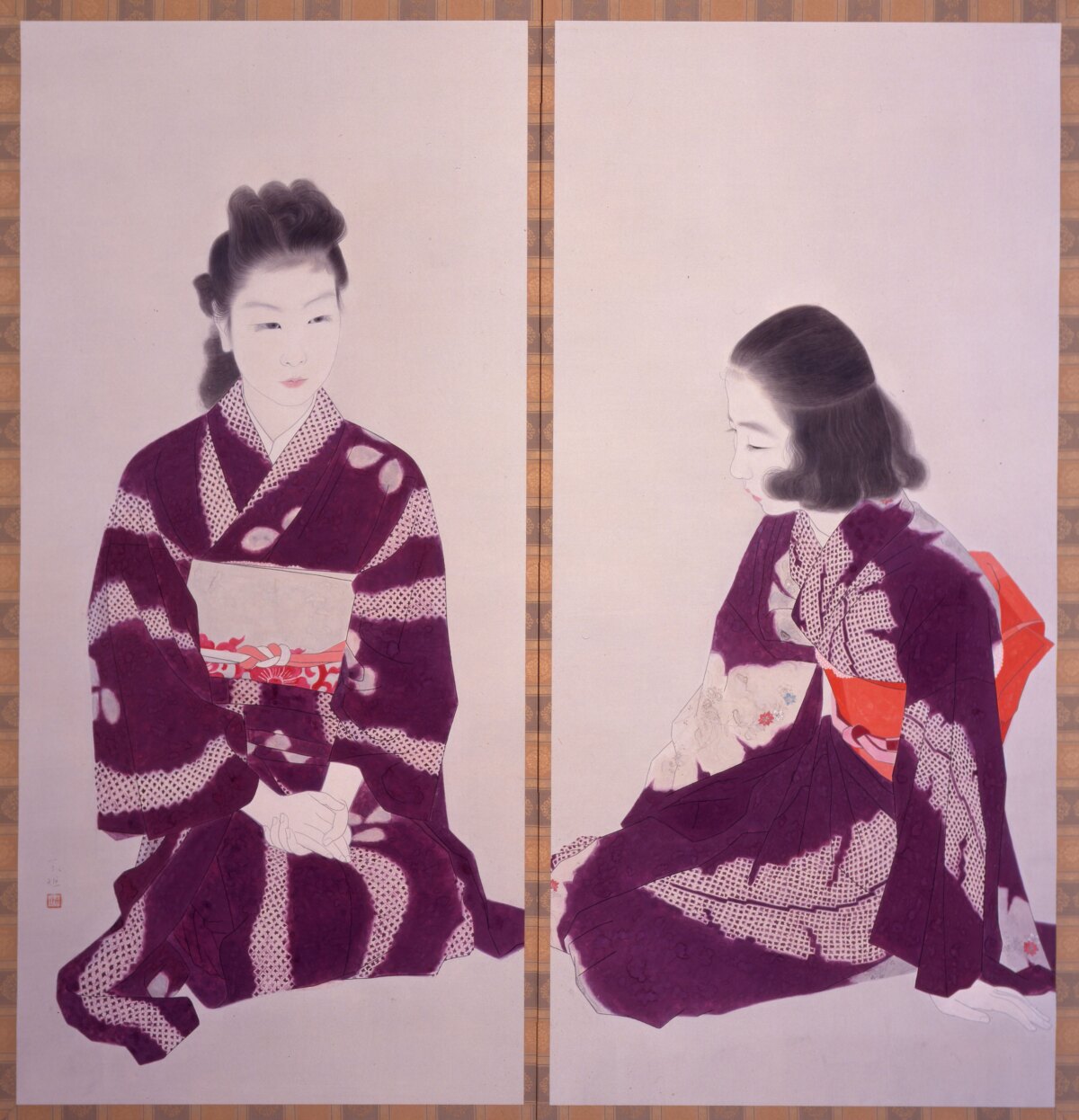
Photo credit: Hamamatsu City Akino Fuku Museum of Art
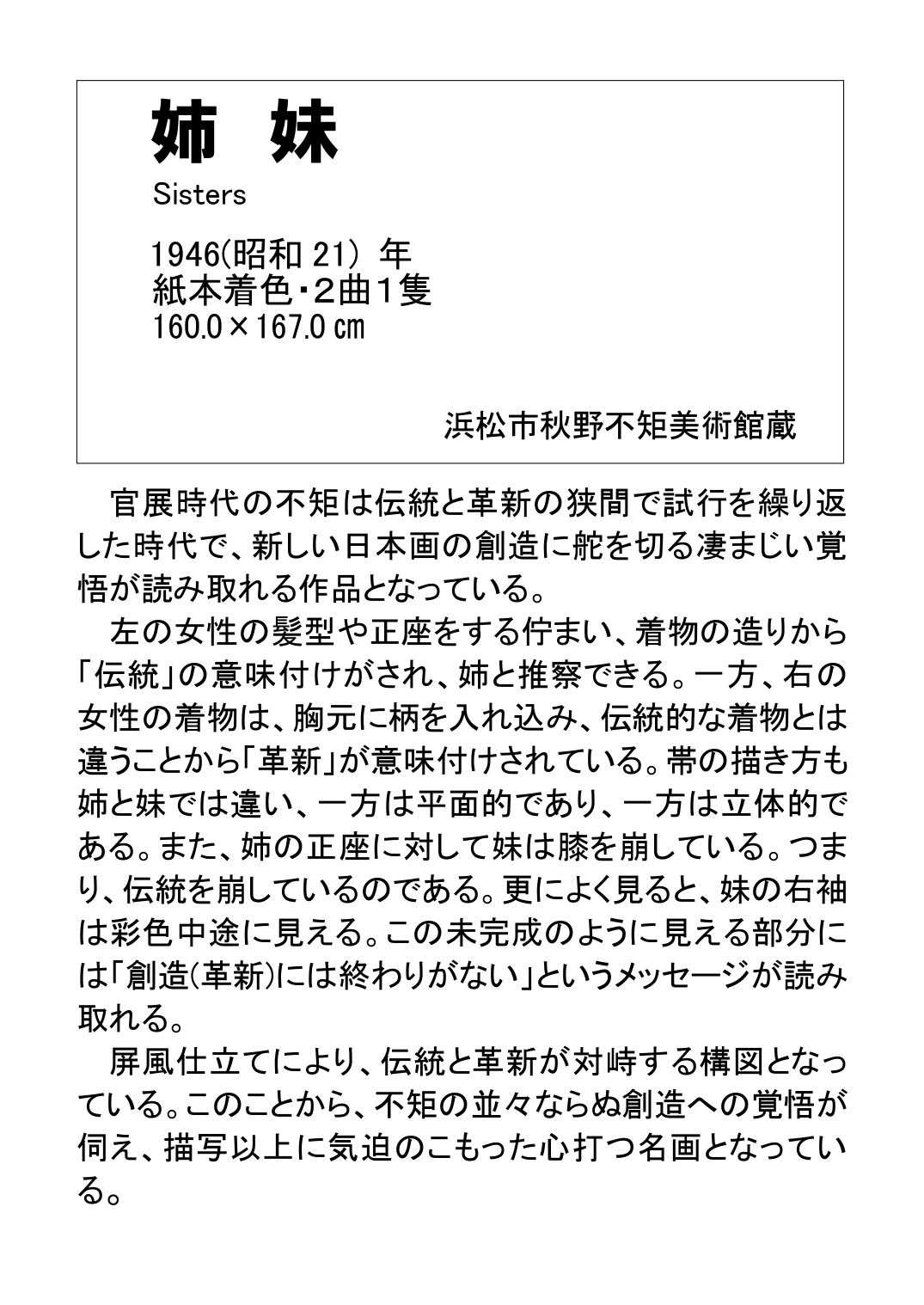
Image source: Hamamatsu City Akino Fuku Museum of Art official website
Facilities & Services at the Hamamatsu City Akino Fuku Museum of Art
Restrooms: Women’s restrooms are available on the first and second floors, and a men’s restroom is on the first floor. A barrier-free restroom is also available on the first floor.
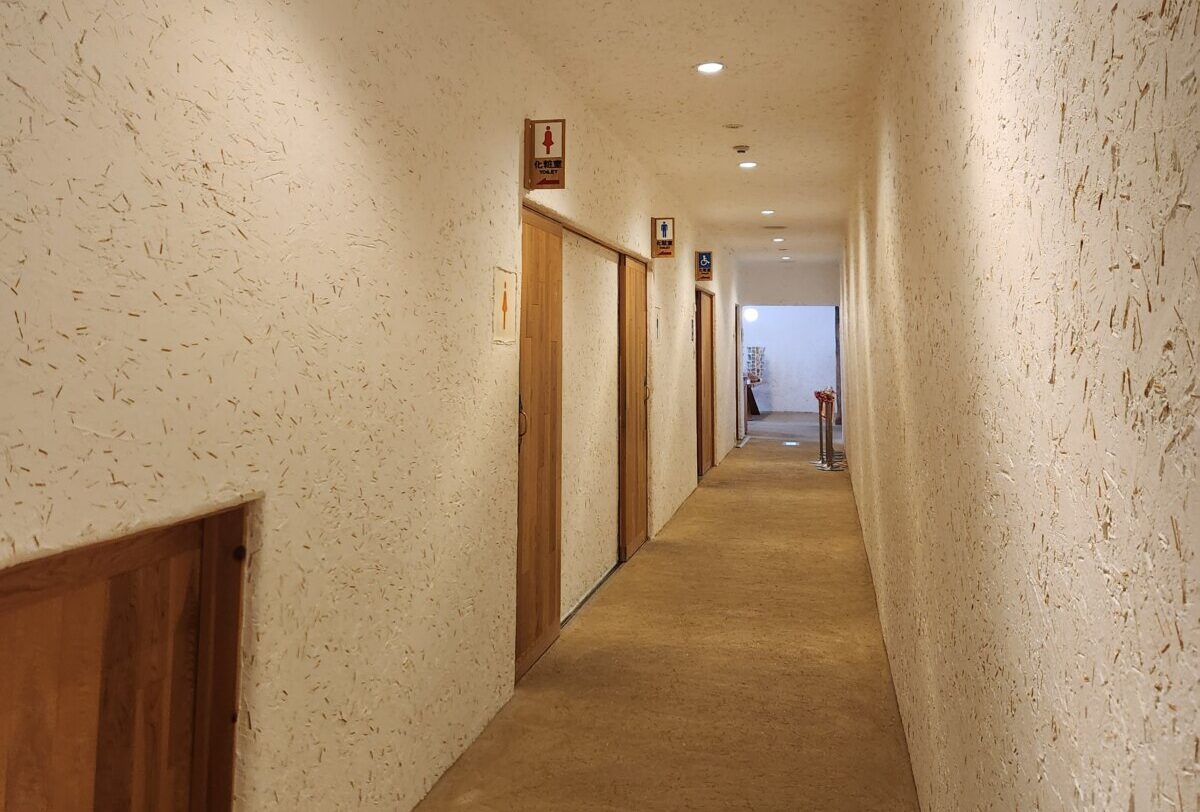
Elevator: Available
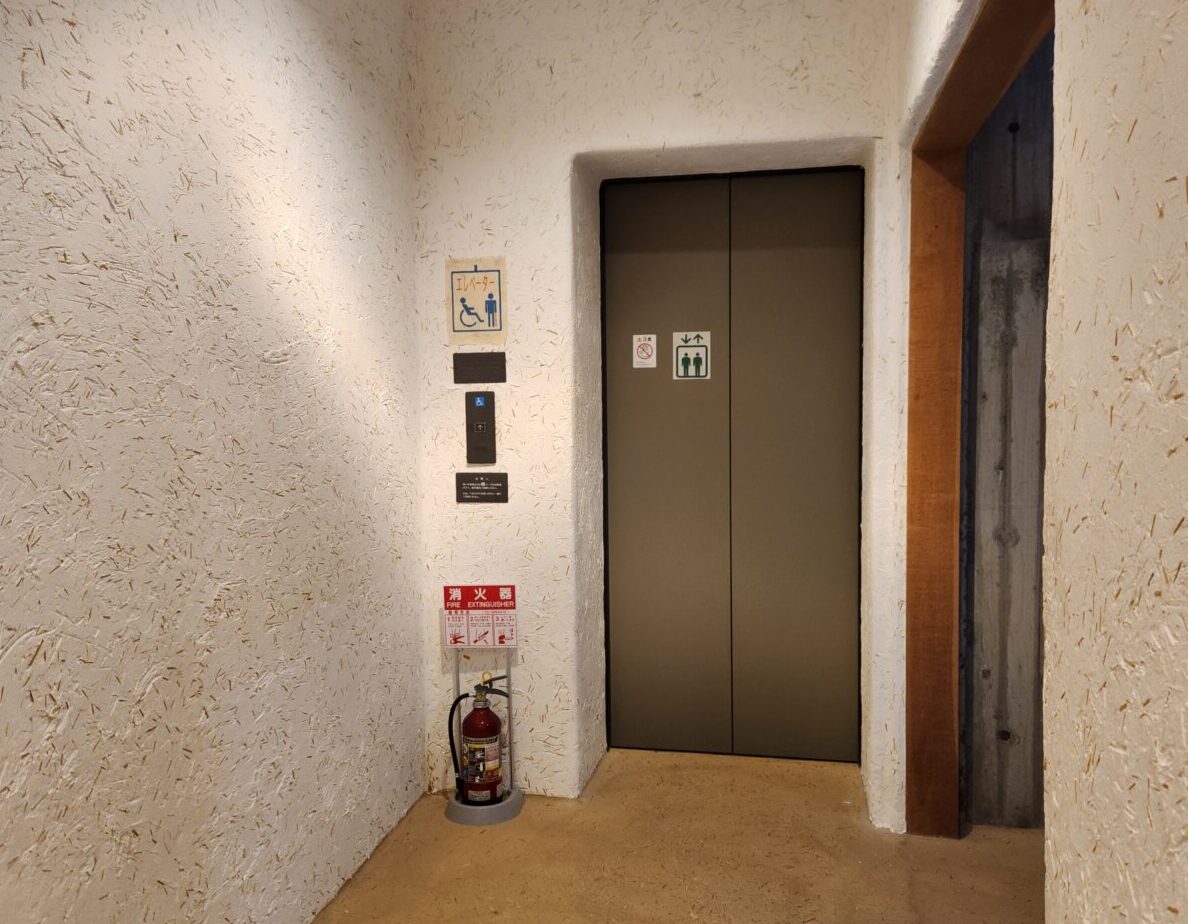
Wheelchair rental: Available
Stroller rental: Available

Rest area: Located outside the museum, with seating available inside for resting.
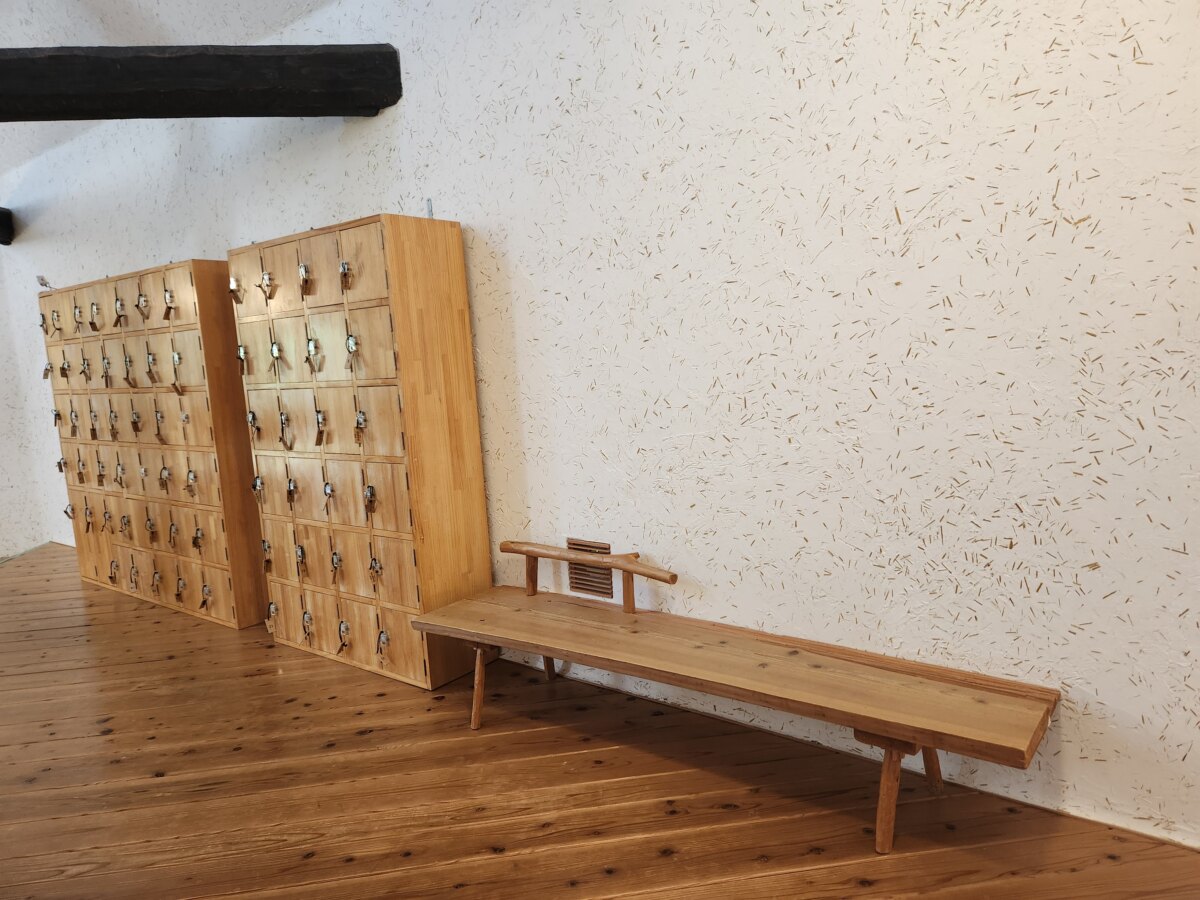
Accessibility: Wheelchair accessible
Cafe / Restaurant: None
Gift shop: Available
Recommended items at the gift shop: Postcards, clear files, tote bags, and more
Free Wi-Fi: Available
Charging stations: None
Coin lockers: None (free luggage storage available at the reception)
Water dispenser: Located on the terrace
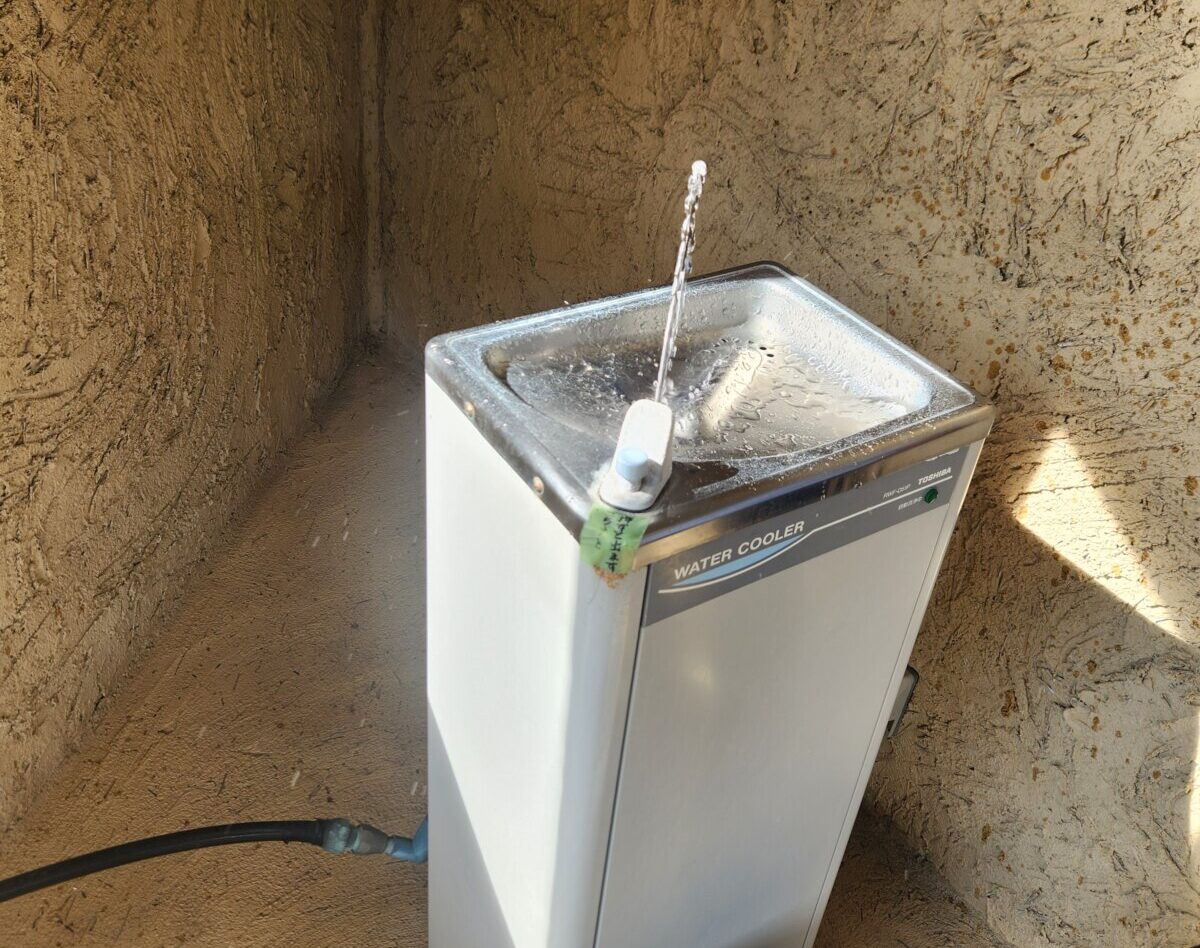
Crowds at the Hamamatsu City Akino Fuku Museum of Art
The museum tends to be relatively busy on weekends around 1:00–2:00 PM.
While there is no waiting time, visiting on a weekday is recommended for those who wish to enjoy a more relaxed experience.
Hamamatsu City Akino Fuku Museum of Art – Facility Information
Address: 130 Futamata, Futamata-cho, Tenryu-ku, Hamamatsu-shi
TEL: 053-922-0315
Opening hours: 9:30 AM – 5:00 PM (last admission at 4:30 PM)
Admission Fees – Permanent Collection Exhibition:
Adults (including university and vocational school students): ¥310
High school students: ¥150
Junior high school students and younger / 70 years and older: Free
Holders of disability certificates and one accompanying caregiver: Free
Special Exhibitions: Fees vary for each exhibition.
*For group rates, please check the official website.
Reservations: Required for group visits (forms available on the official website)
Closed: Mondays (if Monday is a public holiday, the museum is open and closed the following day), as well as during the year-end/New Year period, exhibition changes, and museum maintenance days. (Closure dates may vary depending on the exhibition.)
Official website: https://www.akinofuku-museum.jp/
Access:
By Car:
・About 10 minutes from Shin-Tomei Expressway Hamamatsu Hamakita IC
・About 20 minutes from Shin-Tomei Expressway Hamamatsu SA Smart IC
・About 30 minutes from Tomei Expressway Fukuroi IC
・About 35 minutes from Tomei Expressway Hamamatsu IC
・About 50 minutes from Tomei Expressway Hamamatsu Nishi IC
By Train: 15-minute walk from Tenryu-Futamata Station on the Tenryu Hamanako Railroad
By Bus: Take the Entetsu Bus bound for Futamata / Yamahigashi and get off at Akino Fuku Museum Entrance (about 7 minutes), then a 10-minute walk
By Taxi: About 7 minutes by taxi from Nishikajima Station on the Enshu Railway
Parking: Available
There is a dedicated parking lot at the base of the museum’s slope, as well as a shared parking lot for the library and museum across the street at the Futamata Community Center, accommodating up to 50 cars.
Accessible Parking: Available
Located at the top of the slope, with space for 9 standard vehicles.
Nearby Tourist Spots around the Hamamatsu City Akino Fuku Museum of Art
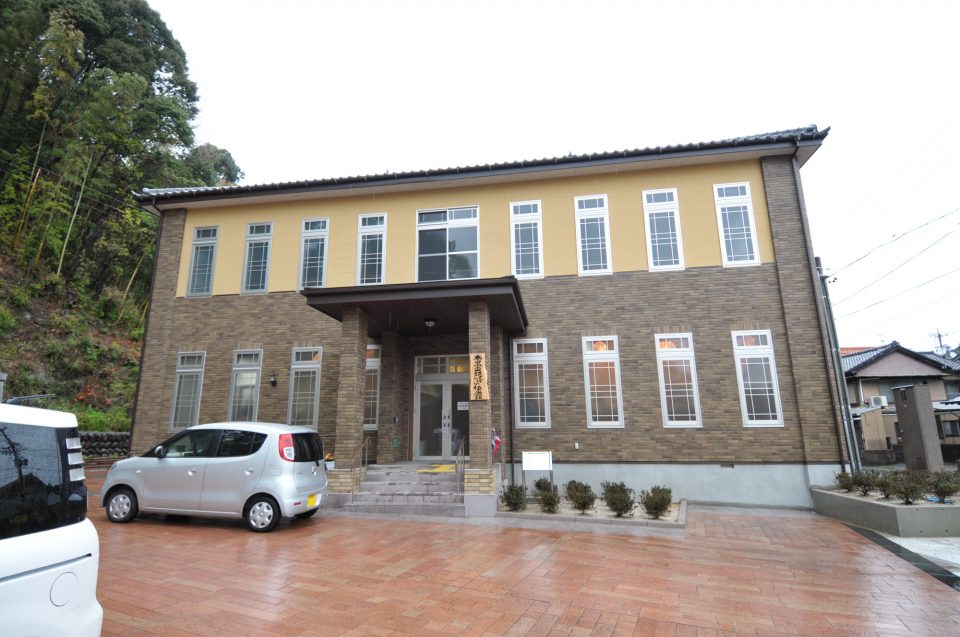
Soichiro Honda Museum of Manufacturing Heritage
There are plenty of recommended attractions in the area.
Be sure to visit them along with the Hamamatsu City Akino Fuku Museum of Art!
・Seiryu-ji Temple
・Soichiro Honda Museum of Manufacturing Heritage
・Ruins of Futamata Castle and Toba-yama Castle
Looking for activities in Hamamatsu and Lake Hamana?
↓↓ Check out here ↓↓
A Message from Mr. Eiji Suzuki, Director of the Akino Fuku Museum
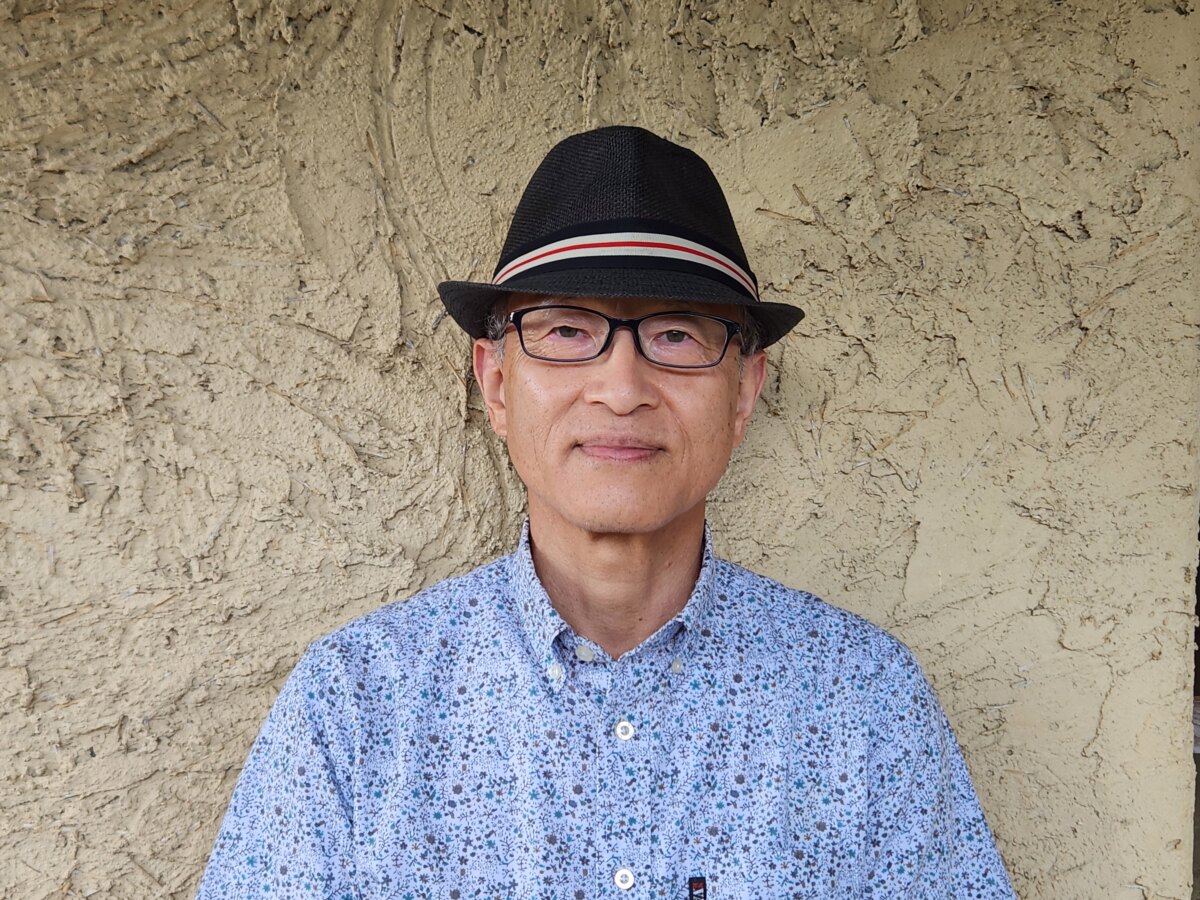
Akino Fuku devoted herself to pioneering new forms of Japanese painting for about 70 years since her first selection for the Teiten Exhibition, leaving a significant legacy in the arts and culture of Japan.
Above all, what makes her work so captivating is its expression of humanism and compassion, which forms the foundation of all of Akino Fuku’s works and continues to inspire warmth and vitality in many people today.
Please also enjoy the sense of harmony between the artworks and the architecture.
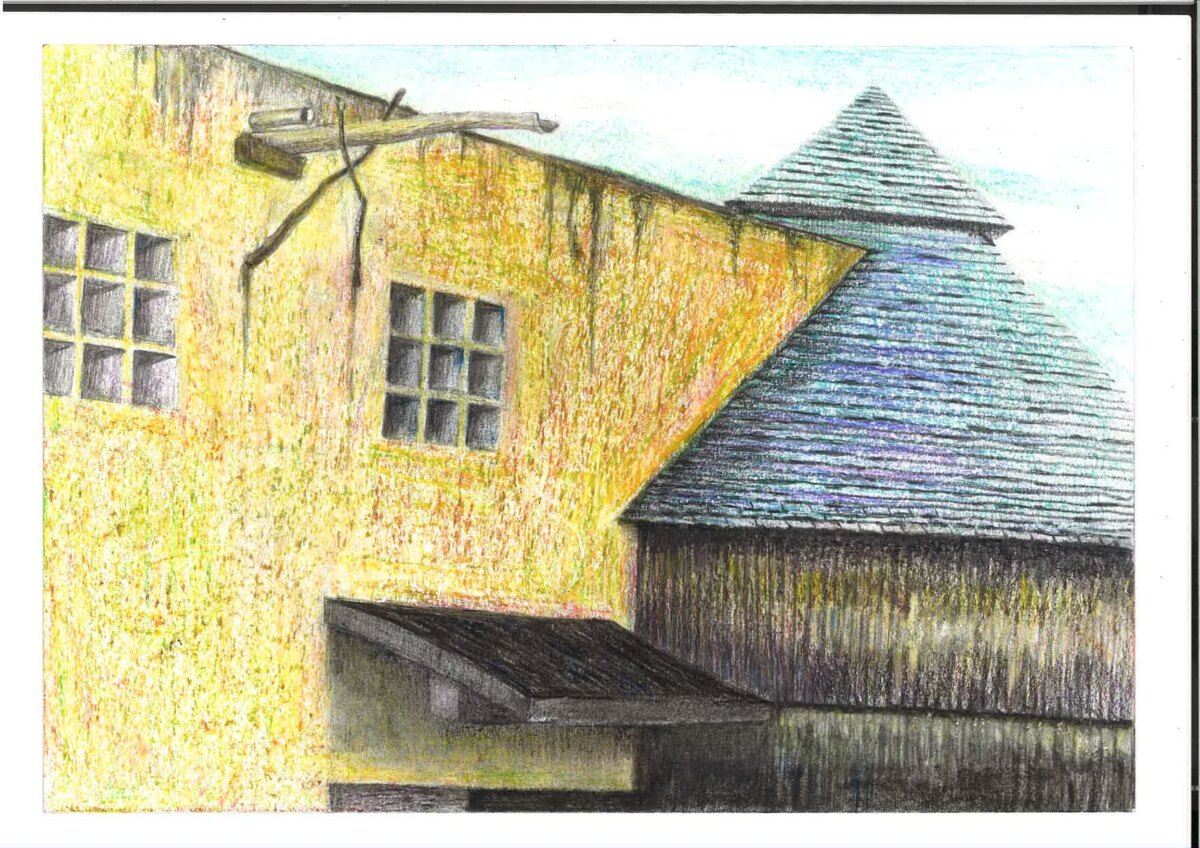
Photo credit: Director Mr. Eiji Suzuki – “Sketch by the Director”
 ̄ ̄ ̄ ̄ ̄ ̄ ̄ ̄ ̄ ̄ ̄ ̄ ̄ ̄ ̄ ̄ ̄
This time, we introduced the Hamamatsu City Akino Fuku Museum of Art.
Why not take some time to relax and immerse yourself in the fairytale-like world of this museum, quietly nestled in the forest?
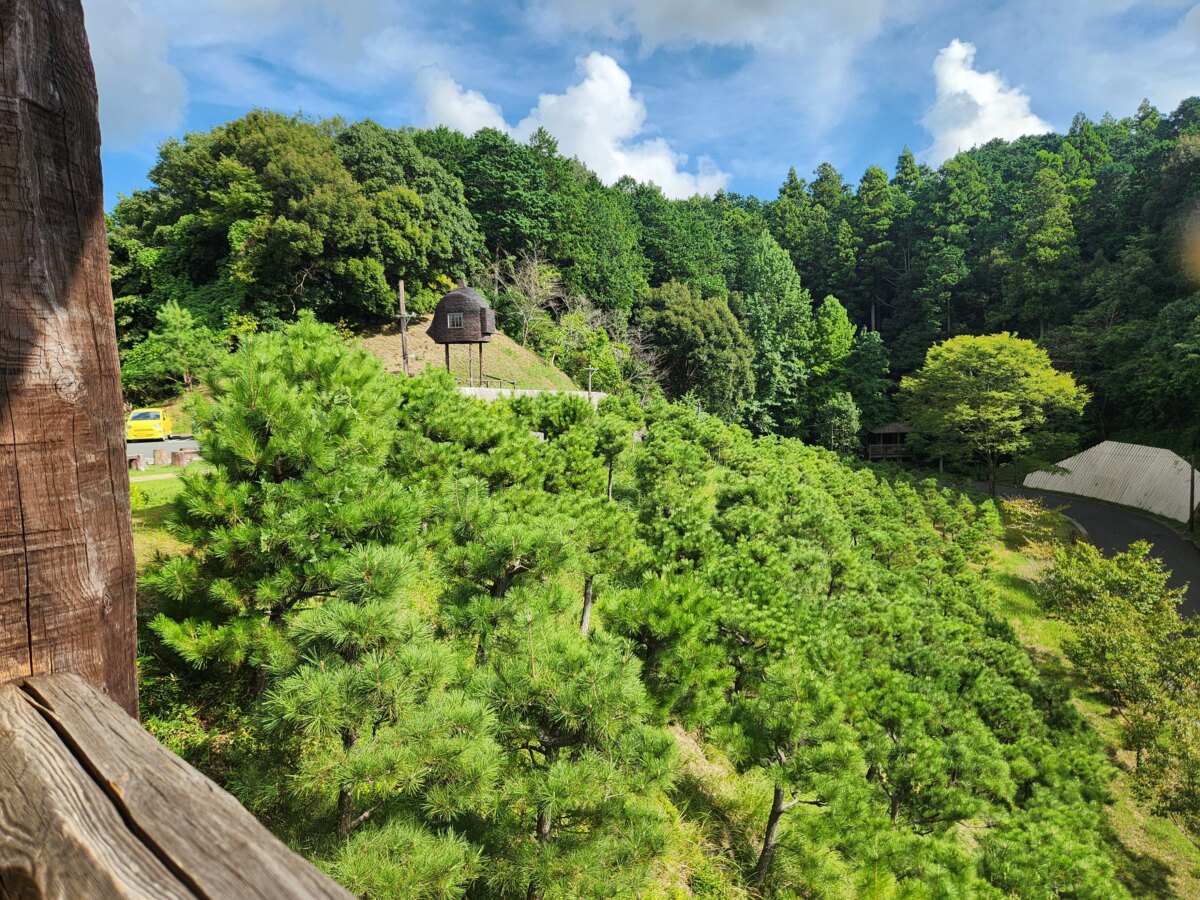
If you’re lucky, you might even catch a glimpse of the Japanese serow, a Special Natural Monument, peeking out from the forest.
Be sure to pay a visit and experience it for yourself!
Cooperation: Hamamatsu City Akino Fuku Museum of Art
Photo credit: Hamamatsu City Akino Fuku Museum of Art
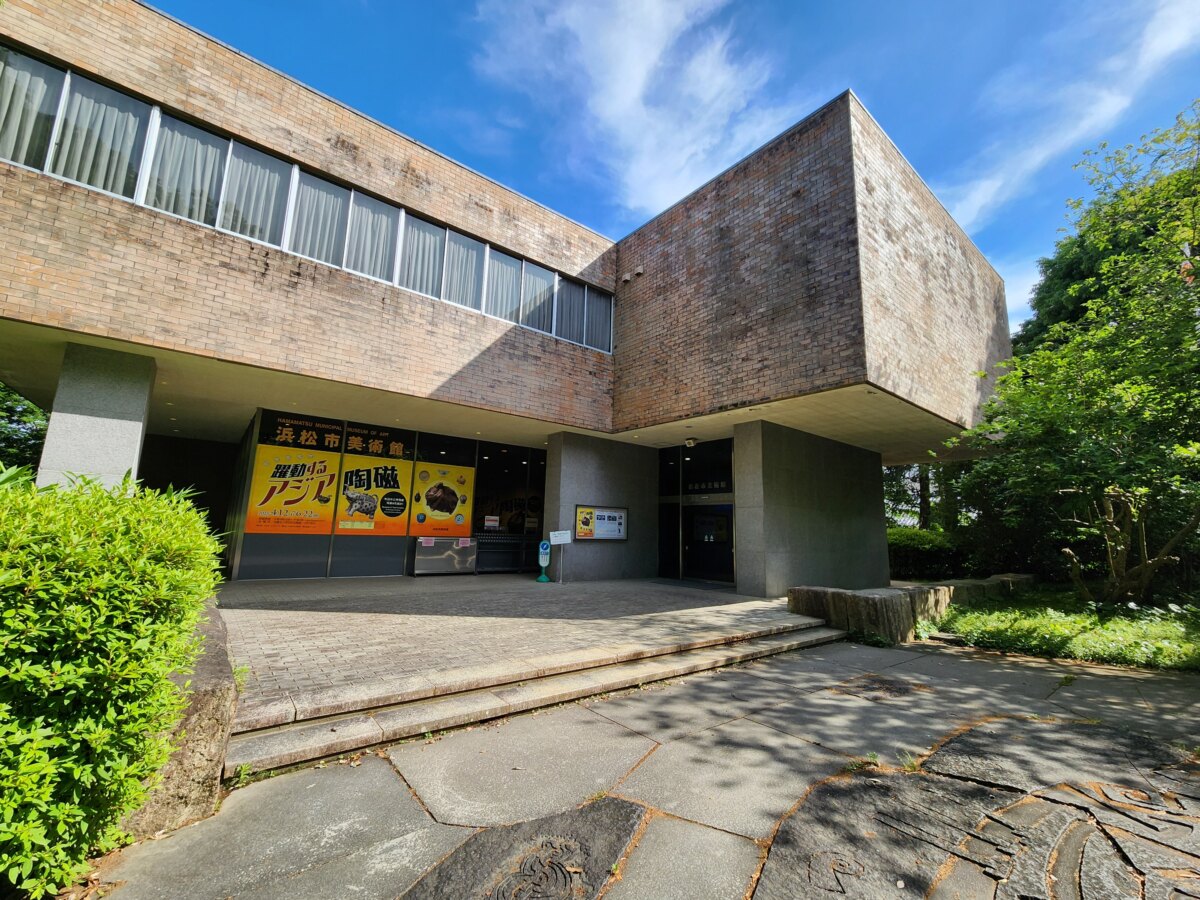
Hamamatsu City Museum of Art – Highlights, Admission, and Parking Info
